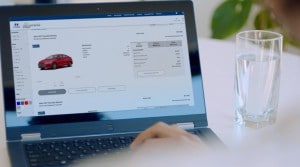Automakers have been working overtime to provide incentives to encourage customers to buy new vehicles during the coronavirus pandemic, and one particular strategy seems to working: zero-percent financing.
Zero percent finance deals hit a new high in April, according to analysts at Edmunds.com, accounting for 25.8% of financed purchases in April, compared to 4.7% in March and 3.6% in February. It’s highest level of zero percent deals Edmunds has on record dating back to 2004.
The zero-percent deals have a cascading effect, Edmunds analysts said, suggesting they have driven down interest rates for all new vehicle loans. The annual percentage rate (APR) on new financed vehicles averaged 4.3% in April, compared to 5.8% in March and 6.3% a year ago. This marks the lowest average APR since August 2015.
(U.S. new car market showing signs of recovery – but faces a long slog, big losses for makers.)
“It’s a buyer’s market,” said Jessica Caldwell, Edmunds’ executive director of insights. “And while there aren’t a lot of buyers right now, those in a position to purchase a new vehicle are taking advantage of the most generous financing programs we’ve seen this century.”
However, there may be a downside to this abundance of zero-percent financing. Edmunds experts warn that some consumers might be making riskier purchasing decisions due to the deals.
According to Edmunds data, the average loan term length hit a record high of 73 months in April, and 81% of car buyers who financed their vehicle agreed to a loan term between 67 and 84 months. Most of the zero-percent deals span 84 months.
(Daimler execs chronicle pandemic’s hit to bottom line in Q1.)
The data also reveals that buyers are willing to spend a bit more too. The average amount financed for a new vehicle climbed to a record high of $37,681 in April, while the average down payment dropped to $3,159 in April, a 21% decline compared to March and the lowest on record since July 2011.
“For the fiscally responsible buyer, this is a great deal, but for others, this could spell trouble,” said Caldwell. “Although longer loan terms help make financing larger purchases more palatable, consumers who opt into these deals put themselves at higher risk for negative equity further down the road.”
This trend applies to used car purchases too. The average term in April was 68.4 months — up a month compared to last April and two months from five years ago. The average mount financed was $23,307, with an average payment of $426: both jumps compared to last April.
(U.S. new vehicle sales expected to drop by half in April.)
However, one area where used cars hasn’t seen a benefit is in the cost of financing those vehicles. The average interest rate for a previously owned vehicle was 8.9% — a small jump from last April’s 8.8%.



